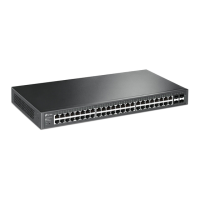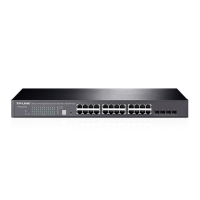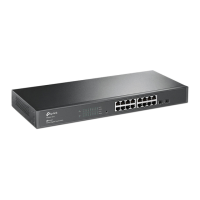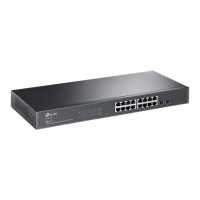Configuring DHCP Service Example for DHCP VLAN Relay
Configuration Guide
411
4
Example for DHCP VLAN Relay
4.1 Network Requirements
The Marketing department and the R&D department respectively belong to two VLANs.
Both of the VLANs have no Layer 3 gateways. The administrator deploys one DHCP server
on the network, and wants the server to assign IP addresses to the two departments.
As the network topology shows, the Marketing department and the R&D department
respectively belong to VLAN 10 and VLAN 20. The Marketing department is connected
to port 1/0/1 of the relay agent and the R&D department is connected to port 1/0/2 of the
relay agent.
Figure 4-1 Network Topology for DHCP VLAN Relay
DHCP Server
192.168.0.59/24
VLAN 20VLAN 10
Marketing Dept. R&D Dept.
DHCP Relay Agent
192.168.0.1
4.2 Configuration Scheme
In the given situation, the DHCP server and the computers are isolated by VLANs, so
the DHCP request from the clients cannot be directly forwarded to the DHCP server.
Considering that the two VLANs have no Layer 3 gateways, we recommend you to
configure DHCP VLAN Relay to satisfy the requirement.
The overview of the configurations are as follows:
1) Create one DHCP IP pool on the DHCP server, which is on 192.168.0.0/24 network
segment.
2) Configure 802.1Q VLAN on the DHCP relay agent. Add all computers in the marketing
department to VLAN 10, and add all computers in the R&D department to VLAN 20.
3) Configure DHCP VLAN Relay on the DHCP relay agent. Enable DHCP Relay globally,
choose the VLAN interface 1 (the default management VLAN interface) as the default
relay agent interface, and specify the DHCP server address for VLAN 10 and VLAN 20.

